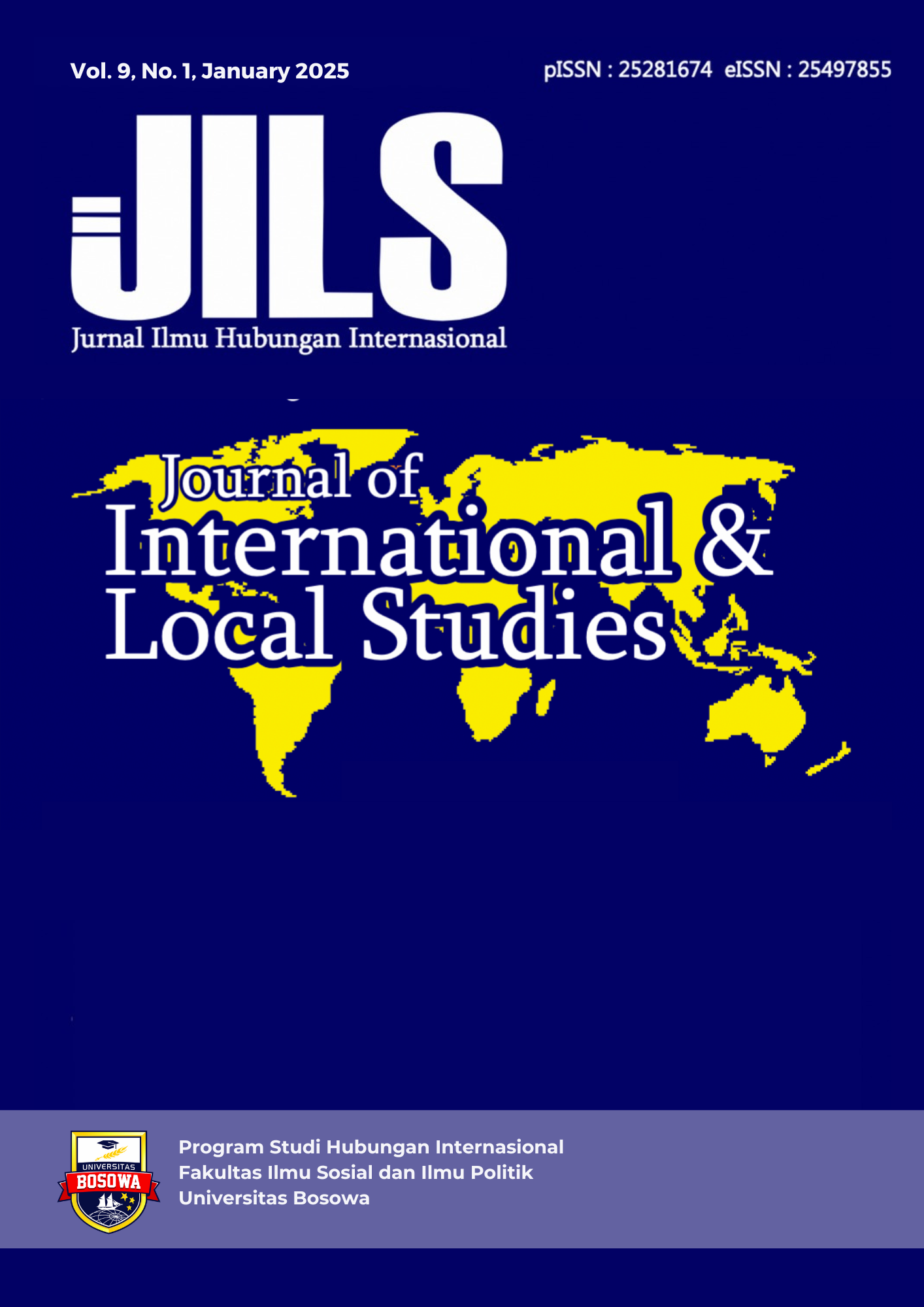Implementasi Ekowisata PT. Wakatobi Dive Resort dalam Upaya Konservasi Maritim di Pulau Tomia Kabupaten Wakatobi
DOI:
https://doi.org/10.56326/jils.v9i1.4533Keywords:
ecotourism, maritime conservation, The Wakatobi Collaborative Reef Conservation Program, PT. Wakatobi Dive Resort, Tomia IslandAbstract
PT. Wakatobi Dive Resort is a tourism business that, since 1996, has built an ecotourism-based marine tourism business. This research aims to determine the implementation of ecotourism by PT. Wakatobi Dive Resort in maritime conservation efforts on Tomia Island, Wakatobi Regency. The Wakatobi Coral Reef Conservation Collaboration Program (Wakatobi Coral Reef Conservation Collaboration Program) is one of the ecotourism program implementations carried out by PT. Wakatobi Dive Resort for maritime conservation purposes by involving local communities. In this research, the author used qualitative methods in conducting research, data collection techniques were taken from various sources, which included observation, oral and written interviews and library research. The Wakatobi Collaborative Coral Reef Conservation Program has 14 practices that impact the environmental, sociocultural, and economic aspects of Tomia Wakatobi Island. These environmental, sociocultural, and economic aspects are a form of ecotourism and maritime conservation. The Wakatobi Coral Reef Collaboration Program has built reciprocal relationships between the resort and the community. The creation of a better conservation area through collaboration between PT. Wakatobi Dive Resort, the National Park Office, and other coral reef patrols. The Wakatobi Coral Reef Collaboration Program preserves marine biodiversity and dozens of marine tourism destination spots in conservation areas.
References
Asy’ari, R., & Nugraha, A. (Eds.). (2021). Kajian konsep ekowisata berbasis masyarakat dalam menunjang pengembangan pariwisata: Sebuah studi literatur. Jurnal Ilmiah Pariwisata dan Budaya, 6(1), 10–19.
International Union for Conservation of Nature (IUCN). (1990). Guidelines for marine protected areas. https://portals.iucn.org/library/efiles/documents/pag-003.pdf
Kementerian Lingkungan Hidup dan Kehutanan (KLHK). (2013). Taman Nasional Wakatobi ditetapkan sebagai cagar biosfer oleh UNESCO. http://ppid.menlhk.go.id/berita/beritafoto/94/taman-nasional-wakatobi-ditetapkan-sebagai-cagar-biosfer-oleh-menlhk
Pemerintah Daerah Wakatobi. (2021). Visi misi: Wakatobi menjadi kabupaten konservasi maritim yang sentosa. Retrieved from https://wakatobikab.go.id/profil?page=visi-misi
Peraturan Menteri Kelautan dan Perikanan (Permen KP). (2020). Pengelolaan kawasan konservasi. https://jdih.maritim.go.id/cfind/source/files/permen-kp/permen-kp-nomor-31-tahun-2020.pdf
Russel, M. (2023). Wakatobi: The business of conservation through sustainable tourism. Retrieved from https://divemagazine.com/scuba-diving-longreads/waktobi-business-of-conservation-sustainable-tourism
Ramadhan, M., & Subandriyo, J. (Eds.). (2018). Kriteria penetapan zona ekowisata bahari. Pusat Riset Kelautan, Badan Riset dan Sumber Daya Manusia Kelautan dan Perikanan, Kementerian Kelautan dan Perikanan.
The International Ecotourism Society (TIES). (2015). Ecotourism. Retrieved from https://ecotourism.org/what-is-ecotourism/
United Nations World Tourism Organization (UNWTO). (2002). Ekowisata dan kawasan lindung. Retrieved from https://www.unwto.org/sustainable-development/ecotourism-and-protected-areas
Wakatobi Dive Resort. (n.d.). Resort selam. Retrieved from https://www.wakatobi.com
Downloads
Published
How to Cite
Issue
Section
License
Copyright (c) 2025 Sasti Putri Tarani, Rosnani Rosnani

This work is licensed under a Creative Commons Attribution 4.0 International License.


